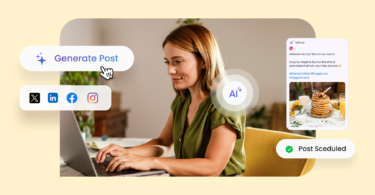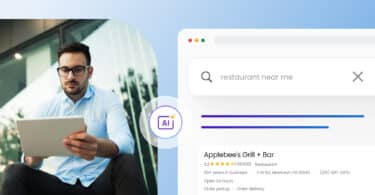Seismic Shifts: Navigating breaking news headlines and a world in constant flux.
In today’s relentlessly fast-paced world, staying informed feels like a full-time job. The sheer volume of information vying for our attention is overwhelming, and the speed at which breaking news headlines emerge demands a new level of critical consumption. From geopolitical events to economic shifts and technological advancements, the constant flow necessitates an understanding not just of what is happening, but why it matters and how it impacts our lives. This article delves into the complexities of navigating this information landscape, examining the challenges and strategies for discerning truth from noise in an era of instant communication.
The proliferation of digital media has democratized access to information, but it’s also created fertile ground for misinformation and sensationalism. Traditional gatekeepers of news – established newspapers, television networks, and radio stations – no longer hold the exclusive power to define the narrative. While this has fostered a more diverse range of voices, it’s also led to a fragmented media ecosystem where individuals often consume news from sources that reinforce their existing beliefs, contributing to the polarization of society.
The Evolution of News Consumption
Historically, news consumption was a scheduled event. People relied on morning newspapers or evening broadcasts to receive their update on current affairs. This provided a shared experience and a common understanding of events. However, the advent of the internet and 24-hour news cycles shattered this model. Now, news is available on demand, anytime, anywhere. Social media platforms have further accelerated this trend, delivering news in bite-sized pieces through feeds prioritized by algorithms, often prioritizing engagement over accuracy. This has fundamentally altered how we process information and form opinions.
| Historical News Delivery | Modern News Delivery |
|---|---|
| Scheduled (Newspapers, Broadcasts) | On-Demand (Internet, Social Media) |
| Gatekeepers (Established Media) | Decentralized (Diverse Sources) |
| Linear Narrative | Fragmented, Algorithmic Feeds |
| Shared Experience | Personalized Consumption |
Challenges in the Digital Age
One of the most significant challenges stemming from the rapid dissemination of information is the spread of “fake news” and disinformation. These intentionally fabricated or misleading stories are designed to manipulate public opinion, influence elections, or damage reputations. Distinguishing between credible sources and unreliable ones requires a high degree of media literacy, including the ability to critically evaluate information, verify claims, and identify potential biases. The echo chambers fostered by social media algorithms exacerbate this problem, reinforcing pre-existing beliefs and shielding individuals from opposing viewpoints. A critical skillset is now the ability to look beyond the headline and thoroughly investigate the source.
The Role of Social Media
Social media platforms, while providing unprecedented connectivity, have also become potent vectors for the spread of misinformation. Their algorithms, designed to maximize user engagement, often prioritize sensational or emotionally charged content, regardless of its veracity. The speed and reach of social media mean that false information can go viral before it can be effectively debunked. Furthermore, the anonymity afforded by some platforms can embolden malicious actors to create and disseminate false narratives with little accountability. The shift in news consumption patterns, prioritizing quick summaries over in-depth analysis, contributes to a societal tendency to form opinions before fully understanding the facts. This has been further complicated by algorithmic curation, where individuals are presented with content which supports existing perceptions, limiting exposure to a diverse range of opinions.
The influence extends beyond overt falsehoods. Subtle biases in framing, selective reporting, and the omission of crucial context can all distort the perception of events. This is particularly concerning when it comes to complex issues requiring nuanced understanding. The pressure to generate clicks and attract eyeballs incentivizes media outlets to sensationalize stories and exploit emotional triggers, further eroding public trust in the media. Monitoring multiple sources and cross-referencing information is vital. Demand for instant updates further pushes the erosion of journalistic integrity, preferring speed over accuracy.
- Verify the source’s reputation.
- Check for factual errors or inconsistencies.
- Consider the author’s potential biases.
- Look for supporting evidence from multiple sources.
Developing Media Literacy Skills
In this challenging environment, media literacy is no longer simply desirable but essential. It encompasses a range of skills, including the ability to critically evaluate information, identify bias, understand the difference between fact and opinion, and recognize the persuasive techniques used in media. Educational institutions, libraries, and community organizations have a crucial role to play in promoting media literacy programs for people of all ages. Parents also need to equip their children with the skills to navigate the digital world responsibly and critically. Furthermore, individuals need to take personal responsibility for their own media consumption habits, actively seeking out diverse perspectives and challenging their own assumptions.
Strategies for Critical Evaluation
Developing robust media literacy skills involves a multifaceted approach. Firstly, becoming aware of one’s own biases is crucial, as these can unconsciously influence how information is interpreted. Seeking out multiple sources, including those with differing viewpoints, provides a more comprehensive understanding of the issue at hand. Utilizing fact-checking websites and tools, such as Snopes, PolitiFact, and others, can help to verify claims and debunk false information. However, it’s important to note that even fact-checking websites may have their own biases, so critical evaluation of their methodology and sources is also necessary. Finally, understanding the economic and political motivations that drive media organizations can provide valuable context for interpreting their reporting. Recognizing the difference between journalism, opinion pieces, and advertising, is vital in distinguishing objective based reporting from subjective views.
- Identify the source and its reputation.
- Check the evidence and supporting information.
- Analyze the language and tone.
- Consider the author’s potential biases.
- Consult multiple sources.
The Future of News and Information
The landscape of news and information is likely to continue evolving rapidly in the coming years. Emerging technologies, such as artificial intelligence and machine learning, will play an increasingly significant role in how news is created, distributed, and consumed. AI-powered tools can be used to automatically generate news articles, personalize news feeds, and detect and flag misinformation. However, these technologies also pose new challenges, such as the potential for AI-generated “deepfakes” and the amplification of existing biases. Finding effective ways to regulate these technologies and ensure their responsible use is one of the most pressing challenges facing society today. Stronger collaborations between technology companies, journalists, and educators will be vital in building a more trustworthy and informed information ecosystem. The ongoing struggle between veracity and misinformation is approaching an inflection point.
| Technology | Potential Benefits | Potential Risks |
|---|---|---|
| Artificial Intelligence (AI) | Automated News Generation, Personalized Feeds, Misinformation Detection | AI-Generated Deepfakes, Amplified Biases |
| Machine Learning | Improved Fact-Checking, Targeted Information Delivery | Algorithmic Manipulation, Filter Bubbles |
| Blockchain Technology | Enhanced Transparency, Secure Verification | Scalability Issues, Complexity |
Ultimately, navigating this complex information environment requires a commitment to lifelong learning and a willingness to challenge one’s own beliefs. The ability to critically analyze information, discern truth from falsehood, and engage in respectful dialogue with those who hold differing viewpoints is more important than ever. The future of a well-informed and functioning democracy depends on it.
Originally published






